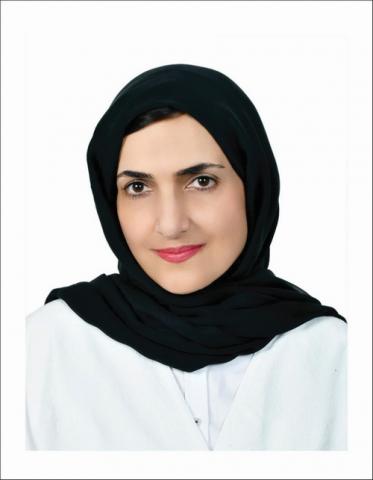Interview with longlisted author Reem al-Kamali
16/03/2022

When did you start writing Rose’s Diary and where did the inspiration for it come from?
I began it in 2019 after asking a question: “who were the women writing in the Emirates before the establishment of the UAE?”. To be more precise, who was writing creative short stories and novels in the 1960s? I kept asking educated Emirati women from the older generation this question, women who had studied in government schools since the 1950s and graduated in the sixties before the establishment of the Union. Why didn’t they write creatively in that period, despite the openness at the time, the schools and study trips, and the important jobs and posts available to them?
We don’t deny that there were female poets. There were many poetesses in the Emirates of the sixties who declaimed their poems in the genres of eulogy, flirtation, rebuke, love and description of beauty, but these were oral poems and were not written down until the eighties. But what about creative fiction in the sixties, which was not poetry? Where was the written down literary story in that period? It was absent, despite the existence of schools, university study trips abroad, the encouragement of education and freedom to choose specialisms. For this reason, I gave Rose, who did not go on a university trip, an active imagination and made her absorbed by her notebooks.
So, inspiration came through Rose, the heroine of Rose’s Diary. I imagined that she lived and studied in schools before the Union, and since she did not take part in study trips abroad with her classmates, for family reasons, this gave me an artistic justification for her to stay at home and write in her secret notebooks about everything she saw around her, and to transform it into stories, plays, confessions, letters and speeches. She then got rid of her notebooks, throwing them into the waters of the inlet so that no-one could see them. The important question is what did she write in her notebooks? She had a great awareness, as a young girl writing about politics, economics, history, colonialism, sadness, and living stories from that era. Imagination helped me to talk about a woman writer living half a century before my time, an educated woman confronting two cultures on her native soil: English culture, with its military rule, and a national Arab culture, strongly evidenced by the widespread use of the Arabic language at that time.
Did the novel take long to write and where were you when you finished it?
It took two years. In the first year, I finished the historical, social and oral research and wrote it. Then covid-19 ravaged the world, and I was at home with two children. It was a great opportunity to work on revising, refining and polishing the language, and that took another year.
How have readers and critics received it?
They have had various views. Some readers liked the language of the novel and its usage of terms related to cultural heritage and nature, and others enjoyed the feminist element. Some people disliked my portrayal of the freedom of women of that time, while others affirmed that they were indeed free and were sent off to study at other universities in the sixties, choosing their own specialisms. In my narrative, I focused upon women writers who took up their pens to write fiction and non-fiction, and in particular the first generation of educated women who graduated from schools in the fifties and sixties, as I said before.
As for the critics, they realised that Rose’s reality was not her home, her characters, and her constant imaginings and illusions. The contents of her notebooks were inspired by her city, Dubai, which was in the early stages of its development in the mid-twentieth century, and her narrative describes the artistic elements of the architecture, with its engravings, in the face of the advancing cement. Other topics she explores are customs and traditions; the rise of Arab nationalism; the blend of modernism and deeply-rooted popular thinking; colonialism; the early knowledge of the sea and the pearl doctor; crafts and products midway between the national and the foreign; the rebellious and submissive inner beings of characters; the Dubai which most foreigners do not know, a city interested in both Sufism and the pursuit of pleasure; the contradictions and aspirations of characters who are grappling with their own emotional, intellectual and social concerns….all this is in her diaries, notebooks and papers, and they were the artistic justification for the narrative.
What is your next literary project after this novel?
My next project has several closely related subjects to do with the Gulf manuscripts about the sea. Where have they all gone? There were so many of them. The book begins in the fifteenth century, when the most important sailor and geographer of the ancient world, Ahmad ibn Majid, was born in the area of “Al-Ghab” in the city of Jalfar, which is now Ras al-Khaimah. Where can we find his lost manuscripts and learning? The second time period is the eighteenth century, when the East India Company was active, and shows the negative consequences of economic private interests. The Company used to carry the manuscripts to England, together with the spoils of archaeology from southern Iraq, across the Arabian Gulf. The novel then moves into the present day and tells of rich intellectuals who passionately collect old manuscripts as a hobby.
